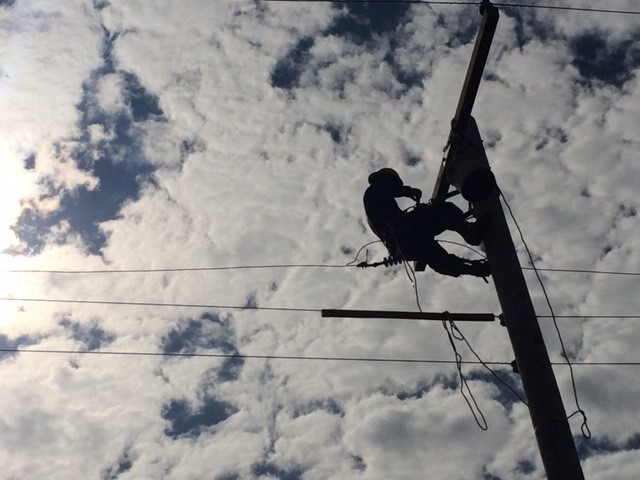“Lean out there and get that grip. Farther. You’re almost there. Quit grabbing onto your belt. We’re paying you for both hands, not just one.” If you’re a new apprentice or just thinking about a career in linework, you’ll probably hear “Encouragement” like this from your journeymen and upper-level apprentices on a regular basis. Climbing up and down a pole is one aspect of the job, but being able to properly position yourself to get the work done safely and efficiently while you are at working level on a pole is the difference between a Lineman and a guy climbing a pole.
The farther you can reach away from the pole with both hands, the better off you will be. You will not only be more efficient while you are working, but you will also gain the respect of the people on your crew. Your climbing belt will determine just how comfortable you will be while you are working around the pole and leaning out.
Maybe you plan to be on the pole for hours at a time and would rather have a bigger belt with more padding. Or, maybe you want a lighter belt that will give you the ability to move around faster.
Like everything else in our trade, climbing belts are specific to the linework industry, and if you’ve never been in the market for one, you may not understand all the terms. After reading this, you’ll be able to:
- Correctly size yourself for a belt (D size)
- Understand which belt will best suit your needs
- Tell the difference between
- Single Set D’s Lineman Belts
- Dual D’s Lineman Belts
- Stacked D’s Lineman Belts
Sizing Yourself Up
Climbing belts are sold according to their D-ring size. The D-ring size is the distance between D-rings across the back of the belt. If you order your belt too small, it will fit tight and your hips will ache after a very short time on the pole. A belt that is too big will feel awkward, and having the D’s too far forward will cause pain to your hips as well. There are 2 methods for getting your D-ring size.
- Measure from the prominent part of your hip bones across your back to the other hip
- Take your jeans waist size and subtract 10 (if you wear a size 34’’ your D-ring size will be 24’’)
Types of Lineman Belts
Dual D’s Lineman Belts
Dual D lineman belts have a primary set of D-rings, and they have an additional set of D-rings positioned in line behind the primary set. The secondary D-rings are typically flared outward to aid the lineman in snapping in when they are crossing over obstacles. The primary D’s are full floating to allow the lineman maximum maneuverability while on the pole. Full-floating is the term used to describe D-rings that move independently of the belt. This will allow the lineman to turn his hips or lean out more easily while on the pole.
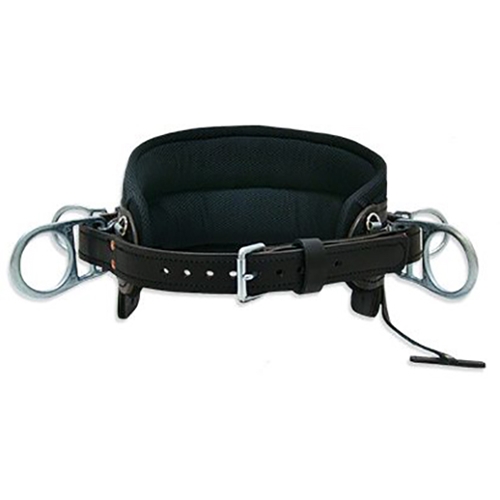
One of our most popular and top-rated Dual-D Climbing Belts. This is because of its comfort and ease of use for some Lineman. A good hybrid between that traditional climbing belt feel and the added safety of the additional D-Rings.
Check Out our Video Review Here: 2015M Review
Shop For All Dual-D Lineman Belts
Stacked D’s Lineman Belts
Stacked D lineman belts have a secondary set of smaller D rings that are positioned above or below the set of primary D rings. These belts tend to have a taller back offering more support, but they are heavier. Climbing over obstacles and moving your work positioning safety lanyard (auxiliary lanyard) is seamless with the stacked D’s. The latest trend in stacked D climbing belts is a single belt and buckle design. This design will give maximum comfort and allow the lineman to move around and pick up his/her legs with ease while climbing. It will also save on extra weight. Primary D’s are full floating with the stacked option.
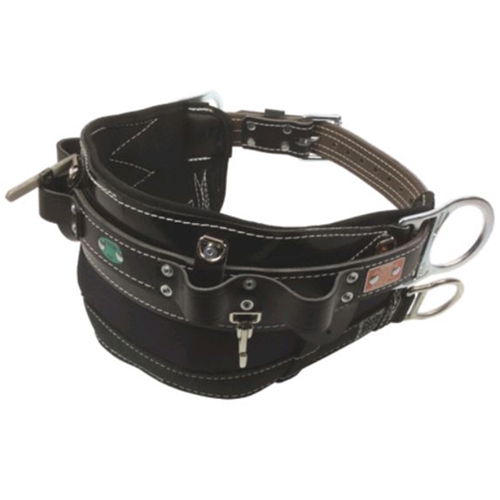
Our most popular and top-rated Stacked-D Climbing Belt. Receiving 5-Stars based on 31 Reviews! The EZ Lite is a durable, comfortable, super lightweight lineman’s belt coming in at an amazing price.
Shop For All Stacked-D Lineman Belts
Single Set D’s Style Lineman Belts
Lineman belts with only one set of D-rings tend to be lighter, but you will not have as much room for your fall arrest and your positioning lanyards. Some have a taller back offering extra comfort. This type of belt was originally developed before mandatory fall arrest and extra lanyards, so there are no extra D-rings to facilitate them, but you can still follow all safety rules while using these belts. If you want a lightweight classic looking climbing belt that’ll get the job done, this style is the one for you.
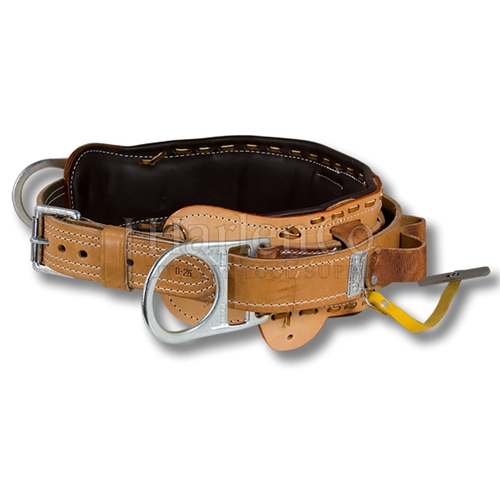
“Can’t go wrong with the 88” says Ted. ’88’ referring to the Floridian’s ID number. This is a great all-around classic belt that gives excellent support and climbing comfort. Featuring padded, contoured cushion sections and flares for the shifting D-Rings. If you are looking for a classic belt, that you can’t go wrong with – look no further!
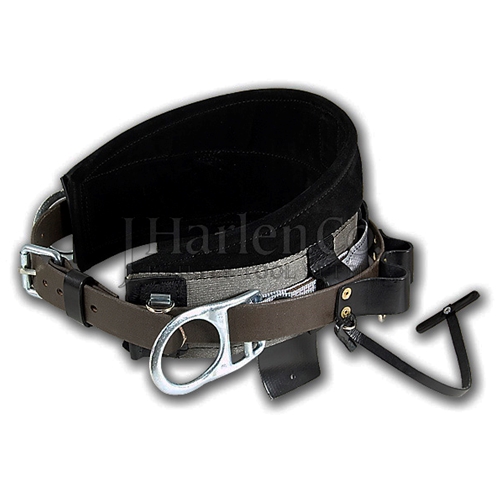
Another great choice in the classic lineman belt department. This belt from Buckingham is named the Lightweight because it weighs a mere four pounds. If you are looking for a lightweight belt that will get the job done, this is the right one for you!
Shop For All Single Set D Lineman Belts
A lineman on a pole is the identifiable, iconic picture that most people see when they think of linework. Climbing is not easy, but with all of the advancements in lineman belts over the years, it doesn’t have to be painful either. Anyone who has been in the trade long enough knows that spending hours on a pole takes its toll on the body. However, spending hours on a pole with improper fitting low-quality equipment is ridiculous. A lineman’s belt is a big investment, but if you pick the right one, it’s an investment that will save you some unnecessary aches and pains and will last you a very long time.
Article Written By Salomon Ramos
Now that you know all about Lineman Belts, head over to our Climbing Spikes: A Beginner’s Guide to complete your climbing gear setup. As you climb more, you should develop safe habits for maintaining your gear – use our Climbing Gear Checklist to learn more. We encourage you to check out all of our Posts, there is a lot of good information for all walks of Lineman. Thanks for reading and stay safe out there!

